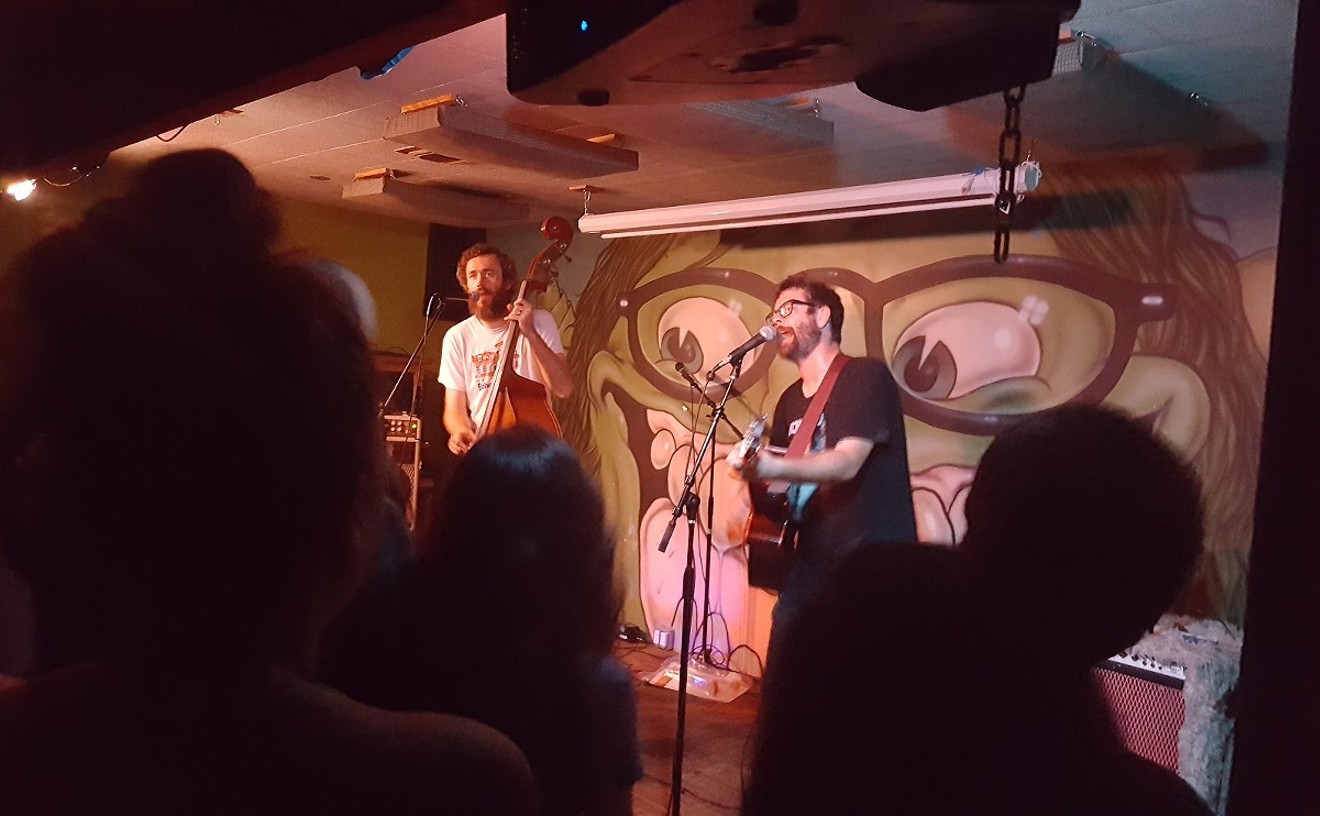Just how wide an array is apparent in this year's exhibition of contemporary craft at the Mesa Art Center. Its 33 works by 30 artists range from ceramics, glass, basketry and fibers to metals, wood and jewelry.
This is the 23rd year that the MAC's gallery -- it recently changed its name from Galeria Mesa to Mesa Contemporary Arts -- has juried a craft show. As with previous exhibitions, this one suffers from the uneven talent that juried events attract. Yet it reflects the powerful spell that obsessive decoration holds over contemporary crafters.
That's apparent in the narrative embellishments of Charlene Marsh's Power Plant, a large tapestry of gold thread, cotton and hand-dyed wool. It also comes through in the saw-blade pattern that Erik Bright carved into the surface of his Star Platter, and the clusters of copper and silver work in Carol Taylor's Spice Container.
Street fairs might be hopping with earnest artisans devoted to making simple, handmade water coolers, soap dishes and towel racks. But objects devoted to visual functions are the ones that find their way into museums, galleries and art centers these days. So, not surprisingly, only a few of the artists included here produce utilitarian designs.
Craftspeople and their craft enthusiasts have boasted for years that the modern emphasis on visual and personal expressions, rather than utilitarian ones, proves craft's leap to art; the belief being that art's commitment to concepts and transformative ideas places it on top of the creative heap.
But such claims overlook the essential place that useful objects -- both practical and ceremonial -- have had through the long history of culture. (All of today's arts evolved from utilitarian roots of one form or another.) The boasts also sidestep the fact that the real direction of craft's leap has been out of the mechanized way of mass production.
This flight from obsolescence hasn't fully freed pottery, furniture, glassware and the like from their illustrious traditions.
Erik Bright's reliance on sgraffito in his Star Platter, for example, and Rachel Abrams' use of melted and cut red glass in her Hypothesis II highlight the formalist traditions of the artists' media.
Other artists resort to the story-telling heritage of crafts.
R. Darden Bradshaw wants her seated figure, Untitled I, made of felt, wire, fabric and beads, to "draw the viewer's attention to the wounds or scarred places we have all experienced."
Anne Hallam wants her pewter and brass cross-section of a cup to "portray different aspects of time, relating to human growth and the various stages of life."
Caroline Gore hopes her Cut, Scrape, Incision, a small assemblage of copper, enamel and silk, conveys the lump-in-the-throat feelings she had during a bout with a thyroid condition.
It's hard to say whether any of these works live up to those aims. However, they clearly jibe with the modern inclination to view art and craft as forms of healing -- a way of making the spirit and psyche whole.
That isn't to say that this therapeutic impetus yields results worth seeing. Too many of the objects here are clichés. Tania Radda's Splash, for instance, is painted wood made to look like blobs of liquid dripping off of a shelf and puddling on the floor. Trish Ramsay-Morin's Sprout is an organic-mechanical combination -- gas can meets asparagus shoot.
These and other works exist as a kind of sculpture-lite, too attached to cuteness and finicky handwork to advance their metaphorical causes.
Weak work is inevitable in the hodgepodge of juried exhibitions. Part of their problem is that they typically attract only entry-level artists -- though some of the artists here have been working for a while. Another drawback is the method used to select the show.
Like other small art centers, MAC doesn't have a budget to send staffers out to scour the nation for artists. So it has to rely on whatever talent the mail truck brings in.
To raise the quality and number of submissions, the center tapped Kenneth Trapp, chief curator at the Smithsonian Institution's Renwick Gallery in Washington, D.C., to pick the show. His name attracted more than 300 artists and about 1,800 works. But even with Trapp running the projector, slides tell you more about the photographer's view of art than they do about the objects themselves. They distort and misrepresent the shapes and sizes of things. They lie about color and texture. They can even lie about the solidity of the craft holding them together.
One of the fibs in this batch was the slide of Sharyn O'Mara's elegant-looking (in a slide) field: and: clutch, a sculptural wisp made of glass, wax and graphite. Shortly after the exhibition opened, the wax holding the work together cracked and sent the pieces sprawling. Its pedestal is now occupied by a sign saying the work has been temporarily removed.
This should be a caution for Mesa, which is in the process of designing a new art center with substantially more exhibition space than the current MAC has. Unless the city begins to adequately fund the development of its shows, its future, larger galleries aren't likely to hold much worth seeing.










